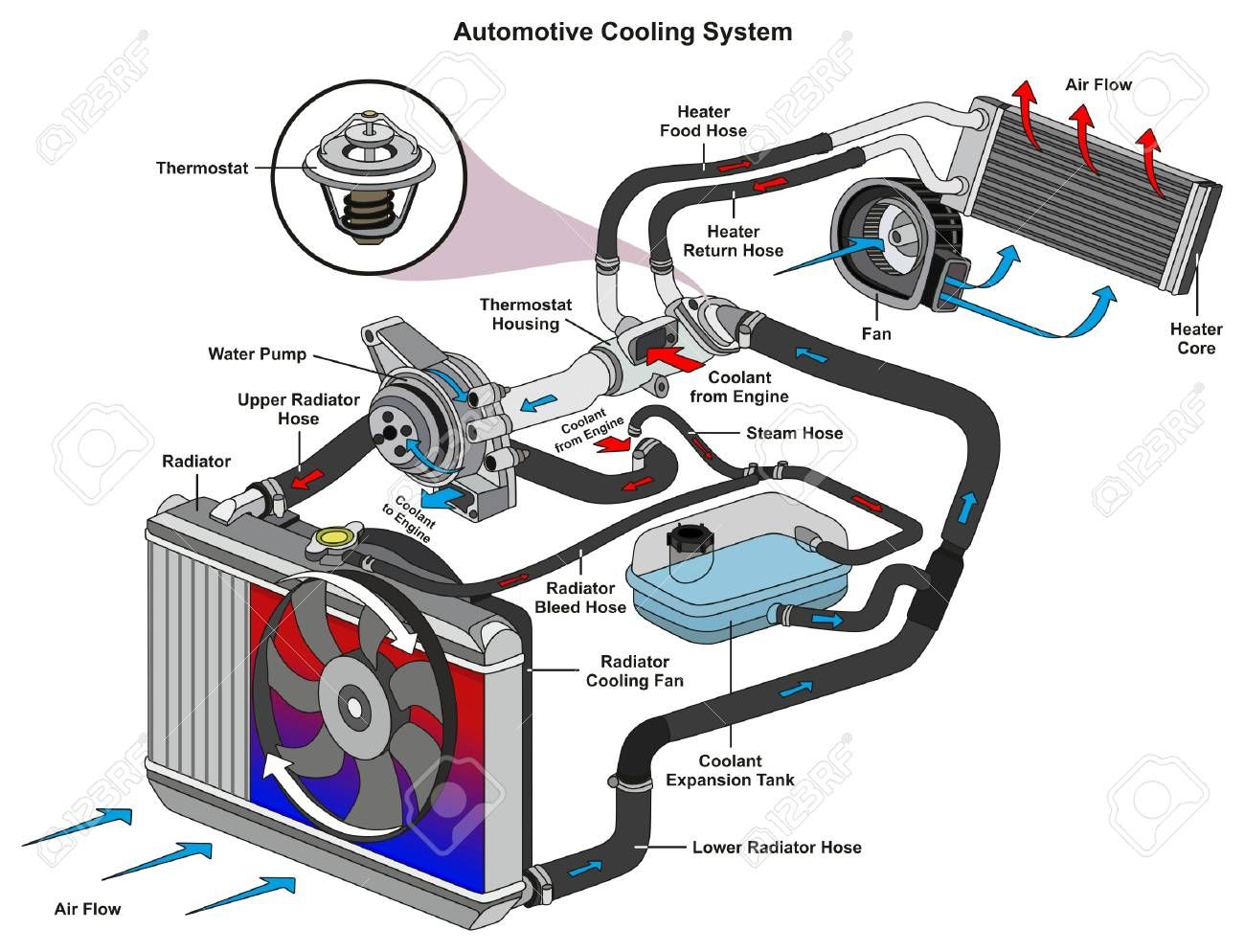
What is coolant?
Engine coolant in a vehicle is a fluid which specially works to maintain the temperature to keep it running in an optimal temperature range. The fluid is basically ethylene glycol or propylene. It is usually green, pink or blue in colour.
How does it work?

Vehicle engines create energy by burning fuel. Some of this energy is used by the engine and this makes the vehicle move forward. The left over energy is converted into plain heat. Some of this heat is released by the engine through the exhaust, while the rest of it stays back in the engine itself.
On an average, combustion temperatures are around 1093 °C. Sometimes it may even go as high as 2842°C. To put things into perspective, aluminium parts start melting at approximately 662°C. This can prove to be highly dangerous for the engine.
The engine has various blocks and heads. The vehicle’s cooling system basically sends the coolant through these blocks and heads. As it moves through these passages, the coolant picks up this heat and continues to travel through a rubber hose to the radiator of the car. As the heated coolant flows through the thin tubes of the radiator, the air steam entering from the grill of the vehicle cools it down.
Once the coolant has managed to get rid of the heat, it continues to go back to the engine to absorb more heat and thus the cycle continues. The coolant manages to keep moving through the engine and radiator and back as a result of the water pump.
Why use Coolant and not any other substance?
Water cannot be used as a cooling agent due to the high temperature as it won’t suffice. The high temperatures inside the engine would very easily boil the water and evaporate it completely. Similarly, in cold weather conditions, the water would very easily freeze when the vehicle is not being used. This would leave the cooling system completely useless.
The cooling system used today is a dual effort of the glycols (coolant) and water. This ensures that the cooling system runs smoothly in both cold and hot environments, all year round.
Additionally, the coolant also has added benefits like how it protects the engine against corrosion.
Disadvantages for Engine and Fleet when high coolant issue is not resolved
According to statistics, a large amount of engine failures are caused due to problems with engine cooling. So engine coolant is used in order to protect the engine on the whole and to keep it running at an optimal temperature.
Ideally, engines should run between 90°C and 104°C. This is when we assume that the engine is running with a perfectly balanced mix of coolant and water.
At 107°C, this mixture will boil but still manage to run smoothly till the engine temperature hits 129°C. Again, this is assuming that the radiator cap is not removed and the cooling system is still intact. In the other extreme case, if the engine is too cold, it simply won’t start.
If the engine exceeds this range and gets too hot, the fuel will ignite before reaching the engine cylinder. The cylinder is where the fuel is burnt up and this is what makes the engine work. Now, if the fuel is igniting before reaching the engine, this will produce more heat and can be potentially dangerous for the engine. It can even blow out the head gasket of the engine!
When dealing with heavy-duty trucks that are transporting goods, small delays caused by coolant issues can prove to be financially taxing for both the client and the fleet companies.
Trucking fleets in the logistics industry run on tight schedules where time is money. Even slight delays in transit time can have enormous monetary costs and repercussions. Furthermore, delays like these ensure that there will be delays in the next slot of shipments as well.
So, in order to avoid engine failure of any kind, coolant alarms are very important. They would alarm the driver or fleet manager of the change in coolant temperature.
Fleetx’s Solution for High Coolant Issues
Considering the scale of damage that high engine temperatures can cost, it is not advisable to risk coolant related ignorance in the logistics industry.
Fleetx’s feature which tackles the coolant issue is very simple to implement. We are not required to install any additional devices to collect data on coolant. If you already have our OBD device installed in your vehicle, no additional instalment is required. If you don’t have any OBD device plugged in, we simply need to plug in the device and you’re all set.
This OBD device is enough to directly collect information from the ECU in the vehicle. The ECU will automatically alarm the OBD if the engine temperature exceeds 103°C. The fleet managers can then take necessary precautions to protect the integrity of the fleet’s functioning. It’s better to be prepared for such emergencies rather than incurring losses of money and breaking down of vehicles.
How urgent is engine coolant?
Coolant aids in removing heat from the engine. Therefore, if there is not enough coolant, the engine may overheat or seize. Continuous operation of an overheated engine may result in lasting harm, such as the welding of the pistons to the cylinders.
What is a coolant alarm?
It's a warning that your engine is overheating, and ignoring it could seriously harm it. Read Dashboard Warning Lights: What They Mean if you're interested in learning more about other warning lights.

